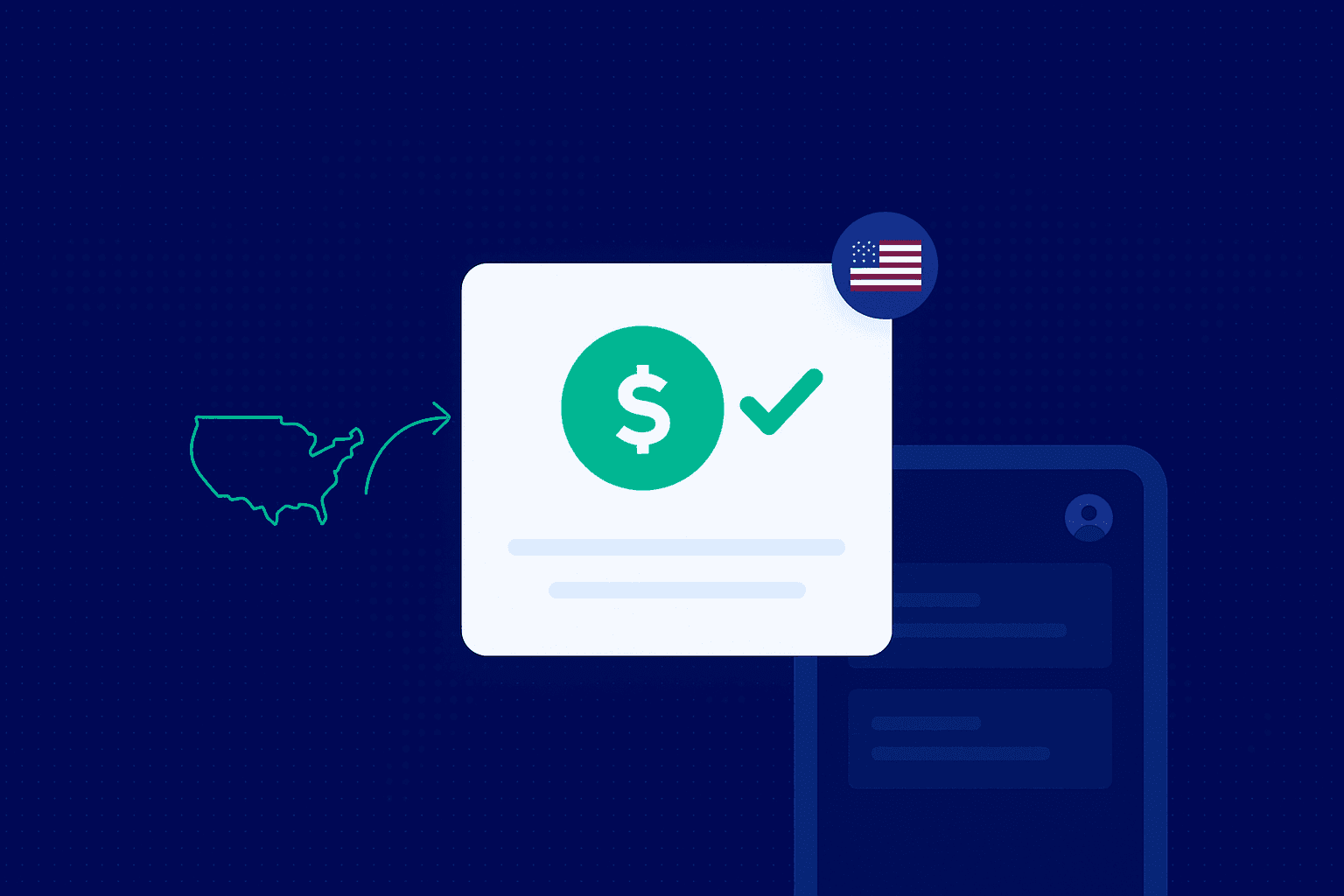ACH Full Form, Meaning and Charges

ACH is one of the most popular electronic payment methods in the US. In 2023, it processed an astonishing 31.5 billion electronic transactions. While ACH is popular for domestic payments, it can also be used for international transfers. If you’re an Indian exporter or a freelancer with US-based clients, you can receive payments from them via ACH.
But what is ACH exactly and is it cheaper than wire transfer to receive payments? Join us as we answer that and a lot more in this detailed blog post
What Is ACH Full Form?
ACH's full form is Automated Clearing House. It's also called Automated Clearing House Network because it can process a comprehensive list of electronic financial transactions like bill payments and ACH direct deposits in the US. The National Automated Clearing House Association (NACHA) based out of Reston, Virginia is the governing body of ACH and oversees the electronic fund transfer system.
What Can ACH Payments Be Used for?
ACH payments have a wide purpose beyond bank-to-bank transfers. Let's look at a few of the types of ACH payments in this section:
Paying Bills Online
With the ACH network, you can pay bills online and automate recurring expenses like utility bills, rent, and subscriptions. This way your bills get paid on time without worrying about when is the next bill due for payment. For example, you can authorize the electric utility company to deduct the bill amount each month from your bank account.
Paying Salaries to Employees
ACH payments and payroll processing work great together. It's a huge relief for businesses because employees get their salaries credited to their bank accounts on time. For example, a company running its payroll every two weeks can directly deposit the due amount to the employee's account on payday.
Tax Refunds or Tax Payments
The IRS uses ACH to credit tax refunds to the taxpayer's bank account directly. It's a quicker and more secure alternative to processing tax refunds using paper checks. In the same way, you can also use ACH to pay taxes electronically and stay compliant with the tax laws.
Mortgages and Loans
Loan repayments are another popular example of ACH payments. You can set up automatic withdrawals for loan repayment instalments so that the mortgage lender gets paid on time and you avoid late payment penalty charges.
Deposits Into An Individual Retirement Account (IRA)
If you're planning to contribute to your Individual Retirement Account (IRA) consistently, then ACH transactions are a great choice. Using this option, you can contribute funds from your account to your IRA account and build the corpus over time.
Business Transactions
Using ACH for daily business transactions like paying vendors or receiving money from customers is also common. For example, if a business gets a $2,000 invoice from their vendor, they can authorize an ACH transfer so that the funds are settled quickly. There is no need to manage checks or cash to make the payment.
What Are The Types Of ACH Transfers?
There are two broad types of ACH transfers: ACH direct deposit and ACH direct payments.
ACH Direct Deposits
In this type of ACH transfer, the funds are electronically deposited into the recipient's bank account. This is most commonly used by a business and government entity to transfer money into consumer's accounts.
Here's a list of the most popular ways of using ACH Direct Deposits:
Paychecks: Businesses use direct deposit to process payroll payments of employees. Salary is credited to their employees' bank accounts according to the payday
Employer-Reimbursed Expenses: Apart from salary, businesses also use direct deposit to reimburse their employees if they have incurred expenses for work-related activities
Government Benefits: Government benefits like disability payments or unemployment compensation are directly credited using this transfer method
Tax Refunds: If a taxpayer is liable for tax refund, they have the option to receive the amount directly to their checking or savings account using ACH direct deposit
Annuity Payments: Annuity payments are made to investors at a set interval consistently. You can ask the insurance or the asset management company to use ACH to transfer the annuity to your account directly
Interest Payments: Similar to insurance companies, banks also make interest payments using the ACH direct deposit route.
ACH Direct Payments
Individuals, businesses or other entities use ACH Direct Payments to make payments from their bank account directly. This is a popular technique for making bill payments and loan repayments.
Here's the expanded list of the most popular ways of using ACH Direct Payments:
Bill Payments: With the user having the freedom to set automatic payment instructions, ACH direct payment is the most popular way to manage recurring expenses like utility or credit card bills
Vendor Payments: Businesses use ACH to pay their vendors and suppliers. The money is directly cut from their account and credited to the receiving bank account without manual work
Charitable Donations: Many charitable organizations give donors an option to set ACH direct payments to make money transfers consistently.
Online Purchases: If an online retailer accepts ACH direct payment, then you can complete the transaction by paying the money directly from your bank account.
What Is an ACH Mandate?
There are two ways to make payments using ACH: one-time payments and ACH mandates. Let's understand each of them individually:
One-time payments are single transactions initiated when you receive the notification for bill payment. For example, when you receive a credit card statement, you decide how much to pay and then authorize the amount to be deducted from your bank account.
ACH mandate is useful when the billing amount is fixed and recurring. As you know how much amount will be auto-debited from your bank account, you can enter into a recurring payment arrangement with the billing company. In this payment arrangement, you authorize the company in advance to deduct the amount from your bank on a specific date. This is useful for paying regular expenses like car loans, mortgages or subscription services.
What Are The Charges For ACH Payments and Transfers?
Typically, you don't have to pay any charges for ACH payments and transfers. However, some service providers can charge fees for initial set-up. If you're receiving money in India through ACH bank debit, platforms like Payoneer can charge a 1% fee on the amount. Other payment platforms like Skydo, allow you to receive money in India through ACH bank debit without any additional cost.
What Are ACH Debit Return Charges?
ACH return charges are levied when the funds return to the originator's account for reasons like not having enough balance, incorrect account information or non-existent accounts. The charges for debit returns differ from one bank to another but typically range between $2 to $5. However, a bank may charge even more in case of repeated returns.
What Are The Advantages Of ACH Transfers?
ACH transfers come with a long list of advantages, but here are the top three that you must know:
Cost-effective
Using ACH direct deposits and direct payments are mostly free for individuals. Even for businesses, ACH is a cost-effective technique for managing payments and receiving money from others. According to the NACHA, ACH costs businesses between $0.26 to $0.50 which is a lot less than issuing checks which costs between $2.01 to $4.
Safe
In ACH transfers there are no physical transfers of money or checks involved, so there is less risk for theft or loss. Besides there are ample security measures implemented like following strong encryption to protect sensitive information. There are other protocols like Multi-Factor Authentication (MFA) which adds an extra layer of security to protect your data from unauthorized access from bad actors.
Can be Quick
Traditional ACH transfers take one or two business days to process. Banks and other financial institutions have also started offering the Same Day ACH for making bill payments or receiving money up to $1 million on the same day. The swiftness of the ACH infrastructure is mostly beneficial for businesses as they can make urgent payments or have better control over managing funds.
What Are The Disadvantages Of ACH Transfers?
ACH transfers also come with a list of disadvantages, here are the top three:
Transaction Limit
Banks and other financial institutions usually impose transaction limits on ACH transfers. These limits can vary as daily, weekly or monthly depending on the institution. If your ACH transfers hit that limit, you are not allowed to make further transactions within the specific time frame
Penalty for frequent transfers and breach of limit
In addition to transaction limits, the bank or financial institution may impose other thresholds. If a user, breaches these limits frequently, the bank might charge penalties or even stop the account from making further ACH transactions. This could be a matter of hindrance for companies that have to make many frequent online payments.
It Can Be Slow Due to Bank Processing Time and Batch Payments
ACH payments are mostly processed in a batch. It means several ACH transactions are batched together in a particular time frame and settled individually. If you are initiating an ACH transfer after the cut-off time, it might be settled on the next business day.
ACH vs Wire transfer
Here's a quick comparison of ACH and Wire transfer:
ACH Transfer
- Geography: Primarily used within the United States although they could be used for international ACH transfers
- Cost: Generally less expensive than wire transfers. ACH fees typically fall between the range of $0.20 to $1.50 per transaction
- Typical Use Cases: ACH transfers are mainly utilized for recurring payments such as payroll, utility bills, and direct deposits.
- Processing Time: Could be more time-consuming because they are processed in batches at specific intervals throughout the day. This means transactions may take 1 to 3 business days to process.
Wire Transfer
- Geographic: Commonly used for both domestic and international transfers. It is a reliable technique for cross-border payments thanks to the well-developed international wire network
- Cost: More expensive compared to the ACH transfer as fees typically range from $15 to $30 for outgoing domestic transfers and $35 to $50 for outgoing international transactions.
- Typical Use Cases: Wire transfers are often used for urgent payments, high-value transactions (such as real estate purchases), and situations where immediate access to funds is required.
- Processing Time: Wire transfers are processed as individual transactions, so they are completed much faster—often within hours or even instantly for domestic wires. However, international wires may take longer due to time zone differences and intermediary banks
Receive Payments From The US In India With Skydo
Working with US clients? International payments don’t have to be a hassle. Skydo makes it simple, cost-effective, and seamless. Set up a virtual account in just 5 minutes and start receiving payments from the US, Europe, Singapore, and Australia—no complex banking required.
With live Forex rates and no hidden fees, Skydo ensures you get the most value for your money. Plus, compliance is effortless with instant FIRA downloads after every transaction, keeping you RBI-compliant without the headache. Need help? Your dedicated representative is just a call away.
Say goodbye to high fees, delays, and red tape. With Skydo, you can focus on growing your business while we take care of the payments!
How long does an ACH transfer take?
ACH transfers typically take one to three business days to complete. It depends on the type of transaction and when it is initiated. Some institutions also offer Same-Day ACH transfers where the transactions are processed in a single day.
What information is needed to make an ACH transfer?
Are there fees associated with ACH transfers?
How can I ensure my ACH transfer is processed quickly












